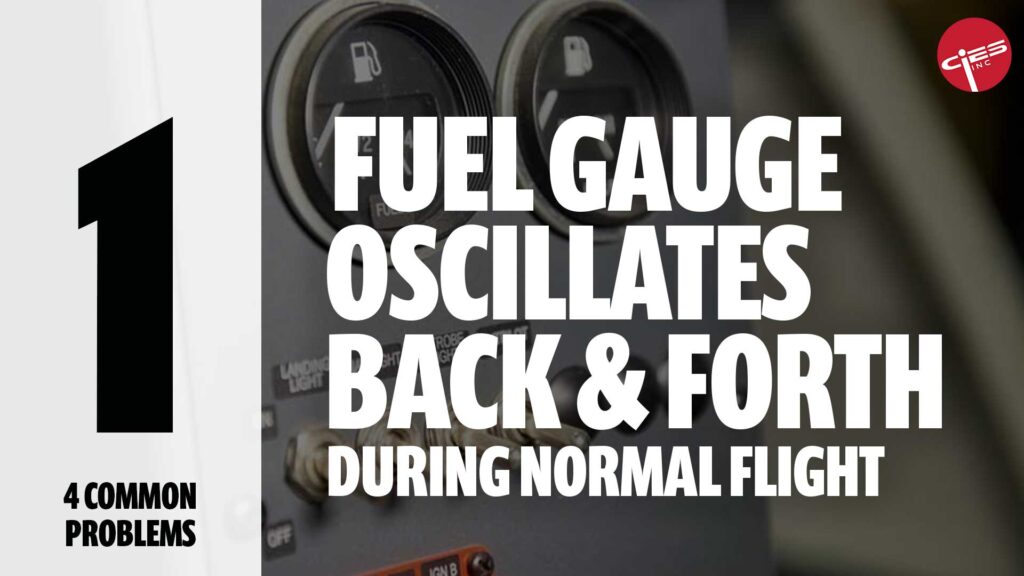Experiencing a malfunction in your aircraft’s fuel sending unit can be a major safety risk, especially during flight. It could lead to incorrect fuel readings, which might force you into emergency procedures you hoped to avoid.
Imagine taking off for a long cross-country flight only to find yourself low on fuel much sooner than anticipated! With the right tools and know-how, you can test your aviation fuel sending unit at the shop.
You may have learned “don’t trust your fuel gauge” or “fly by your watch.” However, these statements only relate to perfect conditions without other factors. Your watch will never indicate a leak in your fuel tank or that your fuel filler cap has fallen off. Proper fuel level indication is paramount in ensuring the safety of the flight crew and passengers.
This guide will show you how to test the resistance output of an aviation fuel sending unit, ensuring accurate fuel level readings to enhance the safety of both crew and passengers.

Common Fuel Sender Problems
Here are some common signs of issues with your fuel level sensor, observable from the cockpit:

1. The fuel quantity indicator oscillates back and forth during normal flight.
A faulty fuel sender can often cause the fuel quantity indicator to oscillate or fluctuate during normal flight. Unlike the predictable movements caused by fuel sloshing, a defective sender introduces inconsistent or erratic electrical signals to the fuel quantity system. These irregular signals can result from worn-out components, poor connections, or internal failures within the sender itself. As a result, the indicator may display constantly changing readings, creating confusion and making it difficult for pilots to accurately assess fuel levels.

2. The fuel quantity reading is stable until it suddenly drops to a lower level.
A sudden drop in fuel quantity readings, where the gauge appears stable but then quickly falls to a lower level, is often caused by inconsistencies in the fuel sender system. This behavior typically points to an issue with the sender’s ability to maintain a continuous and accurate signal. Over time, traditional senders can experience wear and tear on their moving parts, leading to signal disruptions. Corrosion, debris in the fuel tank, or electrical interference can also contribute to these sudden changes in readings. For instance, if the sender’s float or other mechanical components stick temporarily, it might give the appearance of a stable reading until it breaks free, causing the reported fuel level to drop abruptly.
Another possibility lies in electrical faults, such as loose connections or damaged wiring, which can create intermittent signal loss. Vibration during flight may exacerbate these issues, causing momentary disconnections or erratic signals. These problems highlight why it’s essential to regularly inspect and maintain fuel sender systems, ensuring that all components are clean, secure, and functioning as intended. Understanding these potential causes can help pilots and technicians identify and address the root of the problem to maintain accurate and reliable fuel monitoring.

3. The fuel quantity indicator shows readings that don’t match the fuel flow indicator.
A discrepancy between the fuel quantity indicator and the fuel flow indicator suggests a potential issue with the fuel sender. The fuel sender is responsible for accurately measuring the amount of fuel in the tank and transmitting this information to the fuel quantity indicator. When the sender malfunctions, it can produce inaccurate readings, causing the fuel quantity indicator to display levels that don’t align with the actual fuel usage reported by the fuel flow indicator. This miscommunication can lead to confusion for the pilot, increasing the risk of running out of fuel unexpectedly or making decisions based on incorrect assumptions about fuel reserves.
Such discrepancies can stem from various factors, including a damaged or worn-out fuel sender, electrical signal interference, or calibration issues. Over time, the components within a fuel sender can degrade, particularly if exposed to contaminants or harsh operating conditions, resulting in faulty readings. Inaccurate fuel readings can compromise operational safety, making it critical to identify and resolve the root cause promptly. Addressing the issue typically involves inspecting the fuel sender for damage, recalibrating the system, or replacing the faulty component with a more reliable unit to ensure accurate communication between the fuel measurement systems.

4. The fuel quantity indicator consistently shows either full or empty.
A faulty fuel sender that consistently shows a fuel quantity indicator as either full or empty presents a significant operational and safety issue for aircraft. The fuel sender’s primary function is to accurately measure the fuel level in the tanks and transmit this information to the cockpit indicator. When the sender malfunctions and provides incorrect readings, such as falsely displaying a full or empty tank regardless of the actual fuel level, pilots are left without reliable data. This can lead to misjudgments during flight planning, increased stress during operations, and potential fuel exhaustion in critical situations. Such inaccuracies compromise not only the efficiency of flight operations but also the safety of the aircraft and its occupants.
These issues suggest a problem with the fuel level sender. This guide focuses on testing a resistance-based sensor using a test bench. It does not cover the removal of the sensor from the aircraft.
Legal Note: Before proceeding, consult FAR 43.3. Any disassembly may require supervision by a certified A&P mechanic unless it is classified as Preventative Maintenance under FAR Part 43 Appendix A.

Required Tools
- Digital Multimeter
- Aircraft Maintenance Manual
- Resistive Fuel Sensor

Steps For Bench Testing Fuel Senders
Important: Your resistive fuel level sender must be removed from the aircraft. The unit should be on a test bench and cleaned of any debris or excess fuel.

1. Set Up Your Multimeter
- Connect the black test lead to the common (ground) terminal.
- Connect the red test lead to the reference terminal (marked with a “V”).
- Set your multimeter to measure ohms. Refer to your specific model’s manual for instructions.

2. Connect to the Fuel Sender
- Attach the black lead to the sender’s flange or ground terminal.
- Attach the red lead to the center stud of the sender.

3. Read and Adjust
- Check the multimeter for a resistance reading (ohms). If no value is displayed, adjust the lead positions until you get a reading. Ensure the multimeter is set correctly.

4. Test the Float Arm
- Slowly move the float arm from its lowest to highest position. Observe the resistance value; it should change consistently. Check your maintenance manual for expected values and directions of change.
Analyzing Results
- Inconsistent Ohm Values: This may indicate the need for cleaning or refurbishing the sender due to issues like metal corrosion, residue buildup, or foreign object debris (FOD) intrusion.
- No Change in Resistance: This typically suggests a problem with the resistance wiper, such as a bent wiper or one that has worn through the resistance card.
VIDEO RESOURCES: Bench Test Fuel Senders
Bench Test Digital Fuel Senders
Bench Test Analog Fuel Senders
Bench Test Fuel Senders in General
Essential Tips & Tricks for Your First Fuel Sender Install

Replacement Options
If your tests indicate the need for a new unit, consider options like those offered by CiES. CiES manufactures fuel level senders as a physical bolt-in replacement for Cessna, Beechcraft, Cirrus, Mooney, Piper and many other makes and models. In fact, there are nearly 700 makes and models covered by our FAA STC. Here you can view all covered models. CiES is the leading manufacturer of fuel senders for OEM installations.
CiES also supports 30+ fuel gauges and instrument panels. These configurations are covered by the same STC. Occasionally, CiES can connect to your existing gauge (aircraft must have a tank and gauge map), please contact us for details before ordering.
With over 120,000 CiES fuel quantity sending units in the field and 900,000+ hours of trouble-free operation, we are a trusted ally of general aircraft owners and quality aircraft manufacturers. CiES senders exceed 90,000 hours mean time to failure (MTTF), making our fuel quantity solution one of the most reliable aviation systems in existence.
Share this:
About CiES Inc.
Established in 2012, CiES is now the largest supplier of aviation fuel quantity probes and senders. They are the recognized leader in the design, development, certification, and manufacture of electronic sensor solutions for original equipment manufacturers, as well as direct-to-market consumer products. Through the creative application of cutting-edge technologies, CiES creates complex end-to-end solutions. This is a company that is changing the game in aviation technology and revolutionizing the way we navigate the skies. Aiming at future growth and innovation, CiES is pushing the boundaries of what is possible.







